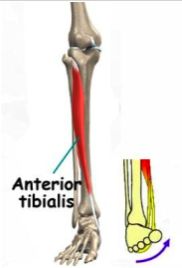By Dr Leong Lee San/Chairman, SAA Race Walking Sub-Committee

(Image courtesy of Dr Leong)
Ricky Khoo Ching Mong is an inspiring example of a good runner finding success in race walking. In 1989 he ran for Singapore in the KL SEA Games and did a PB of 2:37:43 for the marathon. In those days, his PBs for the 10K and 21K runs were 36:11 and 1:16:12 respectively.
In 1992 he tried cross training with race walking, found it to his liking and was hooked. He did so well he eventually went on to break the national record with a time of 47:21 for the 10000m track Walk and a time of 1:38:19.5 for the 20000m Walk on a Manila track at the 1993 Philippine Invitation. The latter record still stands.
In the 1993 SEA Games held in Singapore, Ricky won the bronze medal in the 20km Walk and together with Tan Khek Tiong (bronze in the 10000m) and Helen Low Guay Hoon (also bronzes in the Womens 5000m and 10000m Walks), they were the last Singapore walkers to feature in the SEA Games walking events since.
Two rules govern race walking:
1. One foot or part of a foot must always be in contact with the ground throughout the duration of the walk;
2. The advancing leg must be straightened (not bent at the knee) on first contact with the ground and remain so until the vertical upright position.
(Locking the knee in this situation is not damaging to the joint at all, as some fear. It is so only when jumping up and landing on straight legs or over-striding. Straightening the leg in fact helps to strengthen the knee joint, as will be explained below).
The characteristic gait of race walking is partly due to it having to conform to these rules and partly to adopting good biomechanics for better efficiency and speed.

Vastus Medialis, the guardian of the knee. Full contracted only at lat 5º knee extension. (Image courtesy of Dr Leong)
Speed in walking is a function of stride frequency and stride length. Rotating the lower trunk rapidly to drive the hips in a front and back motion helps to increase stride frequency as well as stride length. Stride length is further increased by adopting the “heel and toe” technique, in which the advancing foot lands on the heel with the ankle maximally flexed and the hind foot powerfully pushing backward, with the toes pointing vertically down and momentarily supporting the body just on their tips.
In race walking, the weight of the body is at all time supported as one foot is always in contact with the ground whereas in running both feet are momentarily off the ground with each stride and the landing foot is subjected to a stress of 3 to 4 times body weight.
With proper race walking technique, which can be easily mastered, a walking speed effectively comparable to running can be attained with equal benefits but not the damaging stress on the joints of the lower limbs and the lower back as in running.
Race walking can be a good cross training alternative for runners as slightly different and complementary muscle groups are used between the two. The quadriceps, the large group of muscles in the front of the thigh, is made up of two main parts, the larger one on the outer lateral side (away from the midline) and the smaller on the inner medial side (nearer the midline). Running develops the lateral part more than the medial one, causing the kneecap to track more laterally in the inter-condylar groove, resulting in excessive wear and tear. Race walking, on the other hand, in having to straighten the knee as required by its rule, develops the medial part, the Vastus Medialis, more than the lateral one, thus counteracting the lateral pull in running and helping the kneecap to track more centrally in the inter-condylar groove, thereby minimizing wear and tear.

A strong Anterior Tibialis muscle helps to hold up the arch of the foot, enabling re-supination for more powerful toe-off. (Image courtesy of Dr Leong)
Running tightens the hamstring muscles in the back of the thigh but race walking, in having to straighten the knee at heel strike, helps to stretch the hamstring and prevent tightening.
A well-developed set of shin muscles (Tibialis Anterior) is evidence of a well-trained race walker as this muscle is mainly responsible for maintaining a maximally flexed ankle at heel strike and lifting up the arch of the foot at the same time. In this way, race walking helps to maintain the arch of the foot preventing excessive pronation, whereas running tends to flatten it.
Running, with its pounding foot strike, puts a tremendous amount of stress on the joints of the lower limbs and the lower back but in race walking, without the pounding, the stress on the joints of the lower limbs and the lower back is much less. Additionally, the trunk and hips rotation technique used in race walking helps to loosen the lower back and lessen the tightness usually experienced after a long run.
Hence runners may find race walking beneficial and an ideal cross training alternative.
Many internationally successful race walkers have been good runners also. Some convert to race walking because of persistent injuries in running; some find more success in race walking because their physique is more suited to race walking as race walking requires a more powerful body build and a slightly heavier body weight is not too much of a disadvantage.
Alternating running with race walking will help runners prevent injuries, maintain fitness and may even improve their running biomechanics and hence speed.
Ed’s note: We welcome any articles from NSAs that will help explain the finer aspects of their sport or a particular discipline within their sport.











I practice race walking for speedy recovery after long distance cycling session.